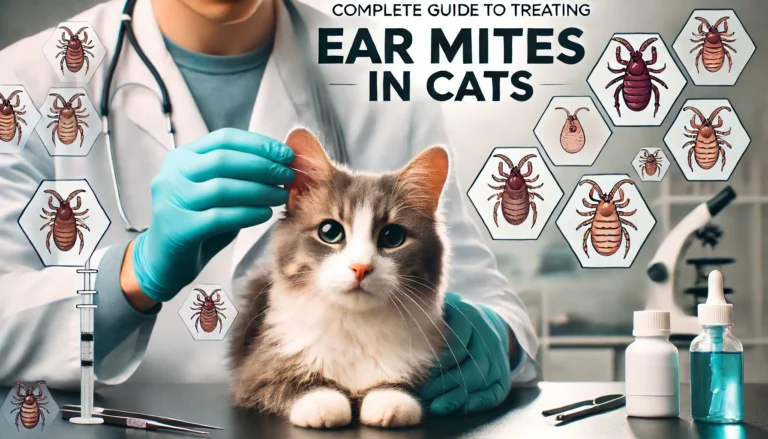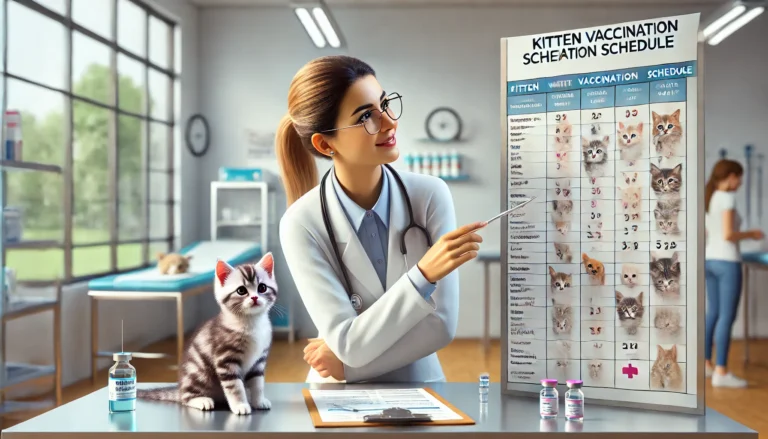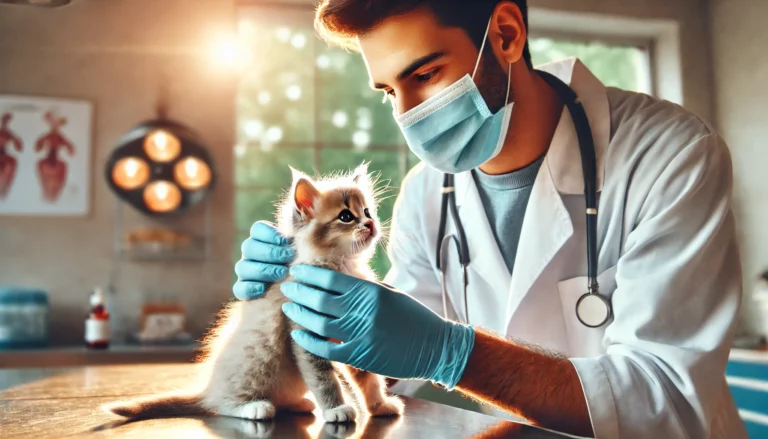Itchy Cat? Possible Causes and When To Worry

itchy the cat
Itching, or pruritus, is a response to irritation in the skin. Cats will often exhibit scratching, licking, or biting behaviors to relieve the discomfort caused by itching. When itching becomes persistent, it’s important to pay attention to the symptoms and investigate the cause. The first step in addressing your itchy cat is to determine whether the itching is simply due to normal grooming habits or if it’s a sign of an underlying issue.
1. Common Causes of Itching in Cats
Several common conditions can lead to itching in cats. Some are relatively mild and easy to address, while others require more intensive treatment. Here’s a breakdown of the most frequent causes of itching in cats:
1.1. Fleas and Other External Parasites
Fleas are one of the most common causes of itching in cats. Fleas bite to feed on your cat’s blood, causing an allergic reaction known as flea allergy dermatitis (FAD). In addition to fleas, ticks, mites, and other parasites can also cause itching. Flea bites can result in itching, redness, and inflammation, particularly on the back, base of the tail, and under the belly. Even a single flea infestation can cause significant discomfort.
Symptoms:
- Excessive scratching, especially around the tail and back
- Hair loss, particularly at the base of the tail
- Red, inflamed, or scabbed skin
1.2. Allergies
Just like humans, cats can suffer from allergies. Cat allergies can be triggered by environmental factors, food ingredients, or even grooming products. The most common allergens for cats include pollen, dust mites, mold, certain foods, and even flea saliva. Allergies can cause itching, redness, and inflammation on the skin.
Symptoms:
- Scratching, licking, or chewing at affected areas
- Watery eyes or sneezing (if the allergy is airborne)
- Redness or rash around the face, ears, or paws
1.3. Dry Skin
Dry skin is another common cause of itching in cats. When a cat’s skin loses moisture, it can become flaky, cracked, and irritated. Dry skin is often associated with environmental factors like low humidity or excessive heat, particularly in the winter months when indoor heating can dry out the air. Cats with long fur or those who are older may also suffer from dry skin.
Symptoms:
- Flaky or scaly skin
- Increased grooming and scratching
- Dry, dull-looking fur
1.4. Dermatitis and Other Skin Conditions
Dermatitis is an umbrella term used to describe inflammation of the skin. There are several forms of dermatitis in cats, including bacterial, fungal, and autoimmune-related conditions. These can lead to itching, redness, and discomfort. Other skin conditions like ringworm (a fungal infection) or pyoderma (a bacterial infection) can cause similar symptoms.
Symptoms:
- Redness, swelling, and heat in the affected area
- Hair loss and scabbing
- Pustules, sores, or crusty patches

1.5. Food Sensitivities and Intolerances
Food allergies and intolerances are another potential cause of itching. While food allergies are less common than environmental ones, they can cause itching, especially around the face, ears, and paws. A food allergy may occur in response to proteins like beef, chicken, dairy, or fish, among others. Additionally, certain grains or fillers in commercial cat food may contribute to skin issues.
Symptoms:
- Itching around the mouth, ears, and paws
- Gastrointestinal issues like vomiting or diarrhea
- Hair loss around the face or ears
1.6. Infections (Bacterial, Fungal, and Yeast)
Infections are another possible cause of itching in cats. Bacterial and fungal infections can develop when the skin becomes damaged, either from scratching, licking, or other trauma. Yeast infections, such as those caused by Malassezia yeast, are also common in cats and can cause itching, especially around the ears and paws.
Symptoms:
- Red, inflamed skin with possible discharge
- Scabs, crusts, or thickened skin
- Unpleasant odor, particularly in the ears
2. When to Worry About Itchy Cats
While some degree of itching is normal, there are situations where excessive itching or the presence of certain symptoms may indicate a serious condition. Here’s when you should start to worry:
2.1. Persistent or Severe Scratching
If your cat is scratching continuously, this is a clear sign that something is wrong. Persistent scratching that doesn’t subside could indicate a flea infestation, allergies, or a skin infection. In severe cases, continuous scratching can lead to open wounds and hair loss, which can become infected.
2.2. Hair Loss or Bald Patches
If your cat is developing bald spots or thinning fur due to itching, it’s time to seek veterinary advice. Hair loss from scratching or licking could indicate an underlying skin condition, parasitic infestation, or infection that needs attention.
2.3. Open Sores or Scabs
When a cat scratches excessively, it can lead to open sores or scabs. This is a serious concern because broken skin can become infected, which could lead to further health problems. If you notice any sores or lesions that don’t heal on their own, consult your veterinarian.
2.4. Changes in Behavior or Eating Habits
If your cat’s itching is affecting its appetite or behavior, it’s time to seek veterinary care. Cats who are in constant discomfort may become irritable, lethargic, or even refuse food. This could indicate a more serious issue like an infection, parasites, or a food allergy.
2.5. Signs of Infection
If your cat has any of the following symptoms in addition to itching, it may be dealing with a bacterial, fungal, or yeast infection:
- Unpleasant odor
- Pus or discharge from the skin or ears
- Red, swollen, or oozing areas
- Fever or lethargy
3. Diagnosing the Cause of Itching in Cats
Diagnosing the cause of itching in cats often requires a thorough examination by a veterinarian. Your vet will begin by taking a detailed history, including the onset of symptoms, your cat’s grooming habits, diet, and any environmental factors that may be contributing to the problem. Common diagnostic tools include:
3.1. Skin Scraping
Skin scraping is a common diagnostic procedure that involves gently scraping the surface of the skin to collect skin cells for microscopic examination. This test is used to check for parasites like mites, fleas, or fungal infections like ringworm.
3.2. Allergy Testing
If allergies are suspected, your veterinarian may recommend allergy testing. This can involve blood tests or intradermal skin testing to identify specific allergens that are causing the itching.
3.3. Blood Tests
Blood tests may be necessary to check for underlying health conditions, including infections or hormonal imbalances that could be contributing to your cat’s itching.
3.4. Skin Biopsy
In some cases, your vet may perform a skin biopsy, where a small sample of skin tissue is taken to be analyzed in a laboratory. This is typically done when other tests are inconclusive, and it can help diagnose conditions like autoimmune diseases.
4. Treatment Options for Itchy Cats
Once the cause of your cat’s itching has been identified, treatment can begin. There are several approaches to treating itchy cats, depending on the underlying cause:
4.1. Flea and Parasite Control
For flea infestations, your veterinarian may recommend flea prevention products such as topical treatments, oral medications, or flea collars. In some cases, you may also need to treat your home to eliminate fleas from the environment. Other parasites, such as ticks or mites, may require specific medications.
4.2. Allergy Management
If your cat has allergies, the treatment plan may involve eliminating the allergen (if possible) and managing symptoms with antihistamines, steroids, or immunotherapy. Special hypoallergenic diets may also be recommended if food allergies are suspected.
4.3. Moisturizing and Skin Care
For cats with dry skin, topical treatments like moisturizing shampoos or oils may be recommended to soothe the skin. Omega-3 fatty acid supplements can also help improve skin health and reduce inflammation.
do you know
Cat acne is a common and sometimes overlooked condition that affects many cats. Known formally as feline acne, this condition can cause considerable discomfort for affected pets and concern for their owners.
4.4. Antibiotics and Antifungals
If your cat has developed a bacterial or fungal infection as a result of scratching, your vet may prescribe antibiotics or antifungal medications. In some cases, medicated shampoos or topical treatments may also be recommended to treat infections.
4.5. Environmental Adjustments
Environmental changes, such as using a humidifier to increase moisture in the air or adjusting the temperature, can help reduce dry skin. If your cat’s itching is related to environmental factors, these adjustments may provide relief.
5. Preventing Itchy Cats: Tips and Best Practices
Preventing itching in cats involves regular grooming, parasite control, and managing any known allergies. Here are some general tips to keep your cat comfortable and itch-free:
5.1. Regular Grooming
Brushing your cat’s fur regularly helps remove dead skin cells and prevents matting. This can also help you detect any early signs of flea infestations, skin conditions, or infections.
5.2. Parasite Prevention
Using preventive flea treatments and checking your cat for signs of parasites regularly can help reduce the likelihood of itching caused by fleas and ticks.
5.3. Balanced Diet
Feeding your cat a high-quality, balanced diet rich in essential nutrients, including Omega-3 and Omega-6 fatty acids, can help maintain healthy skin and fur.
5.4. Minimize Allergens
If your cat has known allergies, try to minimize exposure to allergens by keeping your home clean, using air purifiers, and feeding hypoallergenic food if recommended by your vet.
Conclusion
Itchy cats can be uncomfortable, but with the right approach, most cases of itching can be successfully treated. Identifying the root cause is key, whether it’s fleas, allergies, infections, or dry skin. If your cat’s itching persists or worsens, it’s important to consult with your veterinarian to rule out serious conditions and receive appropriate treatment. Regular grooming, a healthy diet, and parasite prevention are essential components of keeping your cat’s skin healthy and itch-free. By staying vigilant and proactive, you can help ensure your cat remains happy and comfortable.
When should I be concerned about my cat itching?
If your itchy cat is constantly scratching or licking its fur, and it’s not simply due to normal grooming behavior, it’s time to be concerned. When itching becomes persistent and is accompanied by hair loss, scabs, redness, or inflamed areas of the skin, it’s a sign that something more serious may be at play. Common causes for excessive itching include fleas, food allergies, dry skin, or infections. If the scratching becomes more intense, or if your cat exhibits behavioral changes such as irritability, lethargy, or loss of appetite, it’s crucial to seek a veterinarian’s advice. In some cases, ongoing itching can lead to self-inflicted skin damage or infections, which require professional treatment.
How many times a day should a cat itch?
It’s normal for a itchy cat to scratch or groom itself occasionally, as cats naturally groom their coats throughout the day. However, if your cat is itching more frequently than usual or engaging in constant scratching for long periods of time, it’s a cause for concern. If the itching occurs multiple times an hour or leads to bald patches, raw skin, or scabs, the underlying issue may require attention. Excessive itching often signals discomfort from external parasites like fleas, allergies, or skin infections. You should monitor how often your cat itches and consult a vet if the itching becomes excessive or disrupts your cat’s normal behavior.
Why is my cat itchy but no flea dirt?
If you notice that your itchy cat is scratching or licking but there is no visible flea dirt, there are still several possible causes for the itching. Fleas are not always easy to spot, especially if your cat is grooming them off or if the infestation is mild. Additionally, your cat could be suffering from allergies, either from food or environmental factors such as pollen, dust mites, or mold. Dry skin due to low humidity or harsh grooming products could also contribute to itching. Other possibilities include skin infections, mites, or fungal conditions like ringworm. A veterinarian can help identify the cause and recommend appropriate treatments.
How much is too much scratching for a cat?
An itchy cat scratching excessively can lead to skin damage and should not be ignored. While it’s normal for cats to scratch occasionally, excessive scratching—particularly if it results in bald patches, sores, or raw skin—indicates an underlying problem. Cats usually scratch to relieve discomfort caused by itching, and if the scratching persists for several hours a day or becomes repetitive, it could be due to conditions like flea infestations, allergies, or dry skin. In severe cases, scratching can lead to self-inflicted injuries and infections. If you notice that your cat’s scratching is causing visible damage to its skin or affecting its health, it’s best to consult a vet for a proper diagnosis and treatment.
What can I give my cat to stop itching?
To address your itchy cat’s discomfort, the first step is identifying the cause of the itching. If fleas are the culprit, you should use flea treatments such as topical medications, flea collars, or oral treatments as recommended by your vet. For itching caused by allergies, antihistamines or corticosteroids prescribed by the vet can help. Omega-3 fatty acid supplements are also beneficial for skin health and can reduce inflammation. If dry skin is the cause, a moisturizing shampoo or conditioner, along with regular brushing, may help. It’s important not to use human products on your cat, as they may be harmful. Always consult your vet before giving your cat any medication or treatment for itching.






